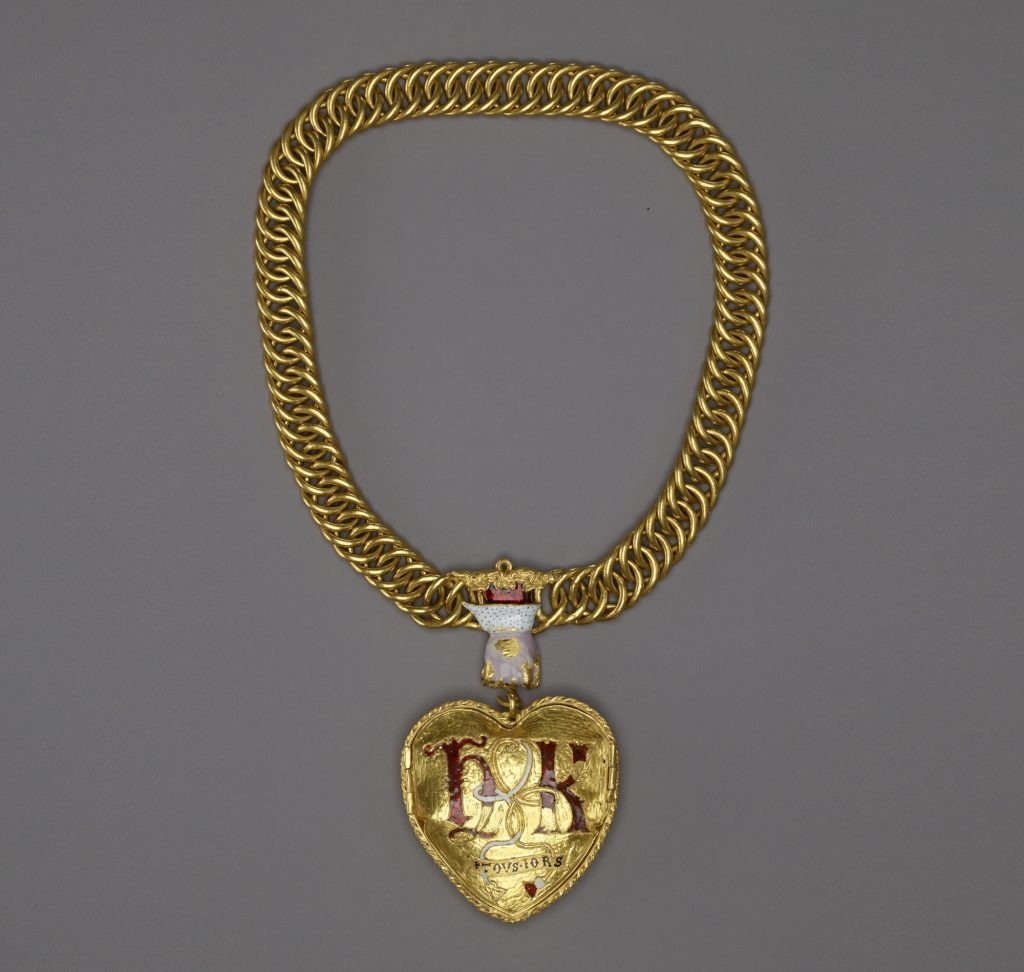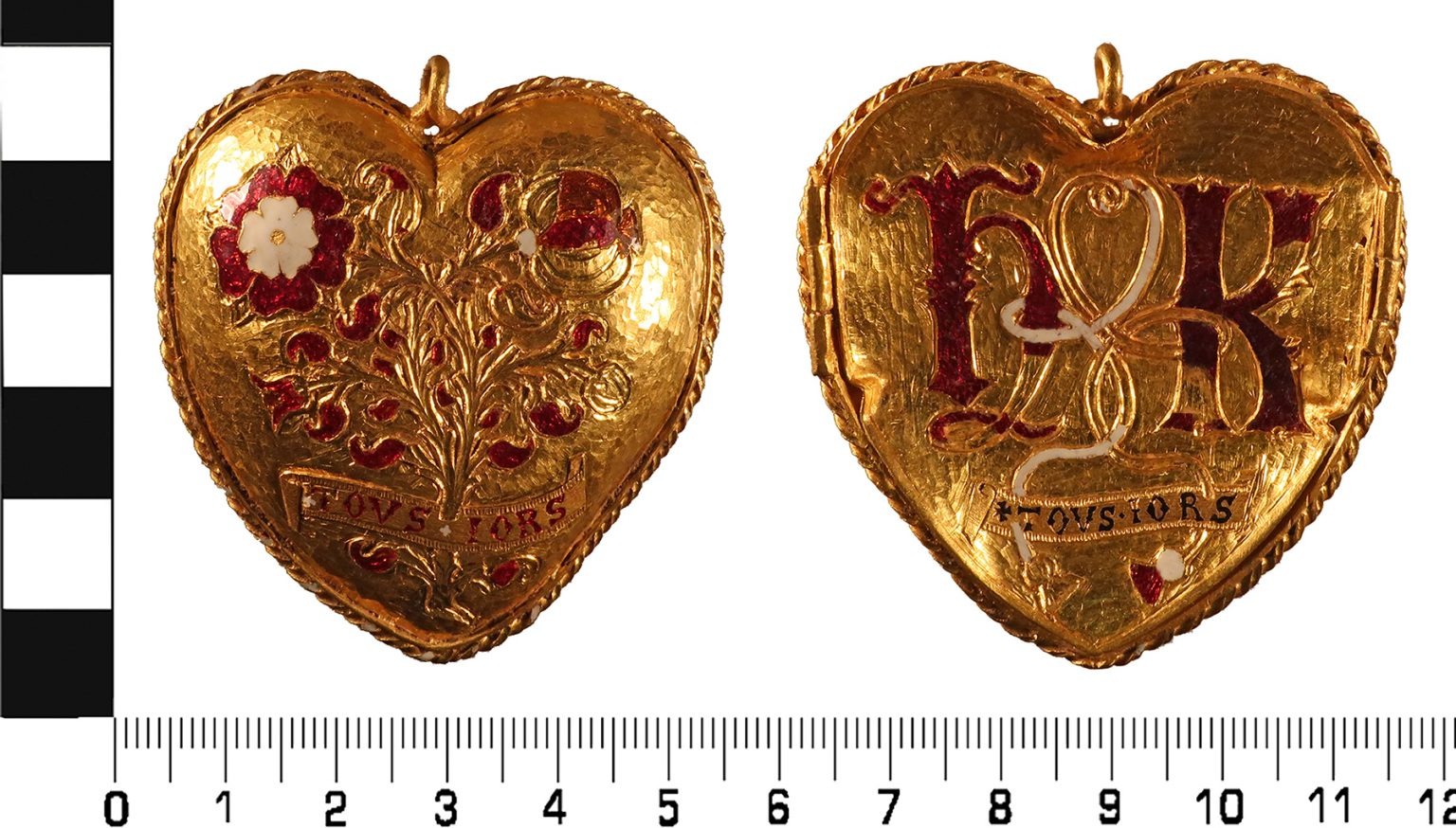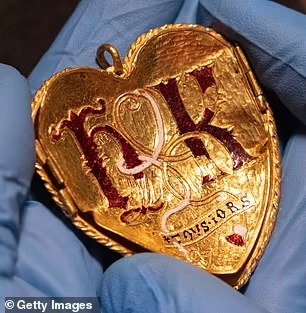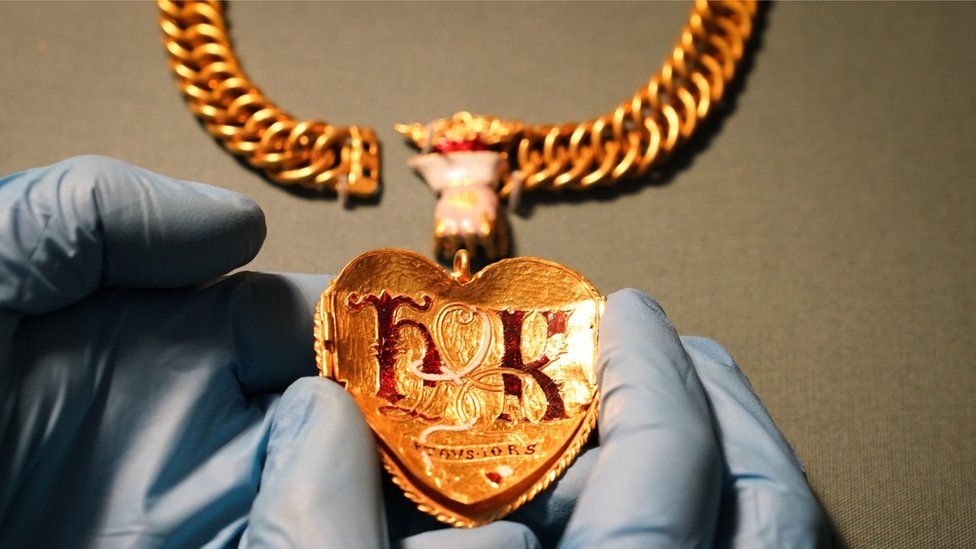It is the most significant Tudor find in 25 years.
Gold chain with pendant associated with Henry VIII and Katherine of Aragon (c. 1521). Photo: © The Trustees of the British Museum.
An Englishman who picked up metal detecting while he was grieving the death of his dog has hit upon the most notable Tudor finds in a quarter-century.
Charlie Clarke was using his metal detector on a friend’s property in the Warwickshire countryside in England, when the machine picked up a target. Clarke unearthed the object, thinking it was probably a soda can, but instead found a heart-shaped gold pendant attached to a gold chain. Ornate script on the reverse of the 2.1-inch pendant spelled the initials “H” and “K,” which, as Clarke’s friend pointed out, could be linked to Henry VIII and his first wife, Katherine of Aragon.

“I knew it was special,” Clarke told the New York Times.
Upon its discovery in December 2019, the pendant was logged with the Portable Antiquities Scheme, a program headed by the British government in partnership with the British Museum to document archaeological finds by members of the public.
According to Rachel King, the British Museum’s curator of Renaissance Europe, Clarke’s discovery represents the most significant find in the PAS’s 25-year history, especially since most objects associated with Katherine of Aragon have been lost.

A close-up of the front and back of the locket. Photo courtesy of Birmingham Museums Trust.
A study by the museum has found that the artifact dates to about 1521, likely created in honor of Henry VIII’s first marriage, which lasted from 1509 to 1533. The front of the pendant is decorated with a Tudor rose, the emblem for the House of Tudor, entwined with a pomegranate bush, the badge of Katherine of Aragon; underneath, the legend “+ TOVS + IORS” offers a pun on toujours, the French word for “always.”

On the reverse of the object, the letters “H” and “K” have been inscribed in red and white enamel, in Lombardic script with decorative lacing common throughout the 16th century.
Archaeologists, however, have not been able to determine for whom the pendant was made—or how it ended up in the ground in Warwickshire. “Nonetheless,” King told the Guardian, “its quality is such that it was certainly either commissioned by or somehow related to a member of the higher nobility or a high-ranking courtier.”

The unearthing of an artifact by a hobbyist bears out the increasing number of metal detectorists who are seeking out archaeological finds across the U.K. The PAS’s annual report for 2021 recorded 45,581 archaeological discoveries by the British public, 96 percent of which were located by metal detectorists. In Warwickshire, 9,499 of such finds have been reported over the past decade.
While Clarke has yet to get the pendant valued, he intends to split any proceeds between him and the owner on whose land the object turned up. The British Museum said the artifact will likely be acquired by a museum.
“People say it’s like winning the lottery; it’s not. People actually win the lottery,” Clarke noted. “When was the last time a crown jewel was unearthed?”
Leave a Reply